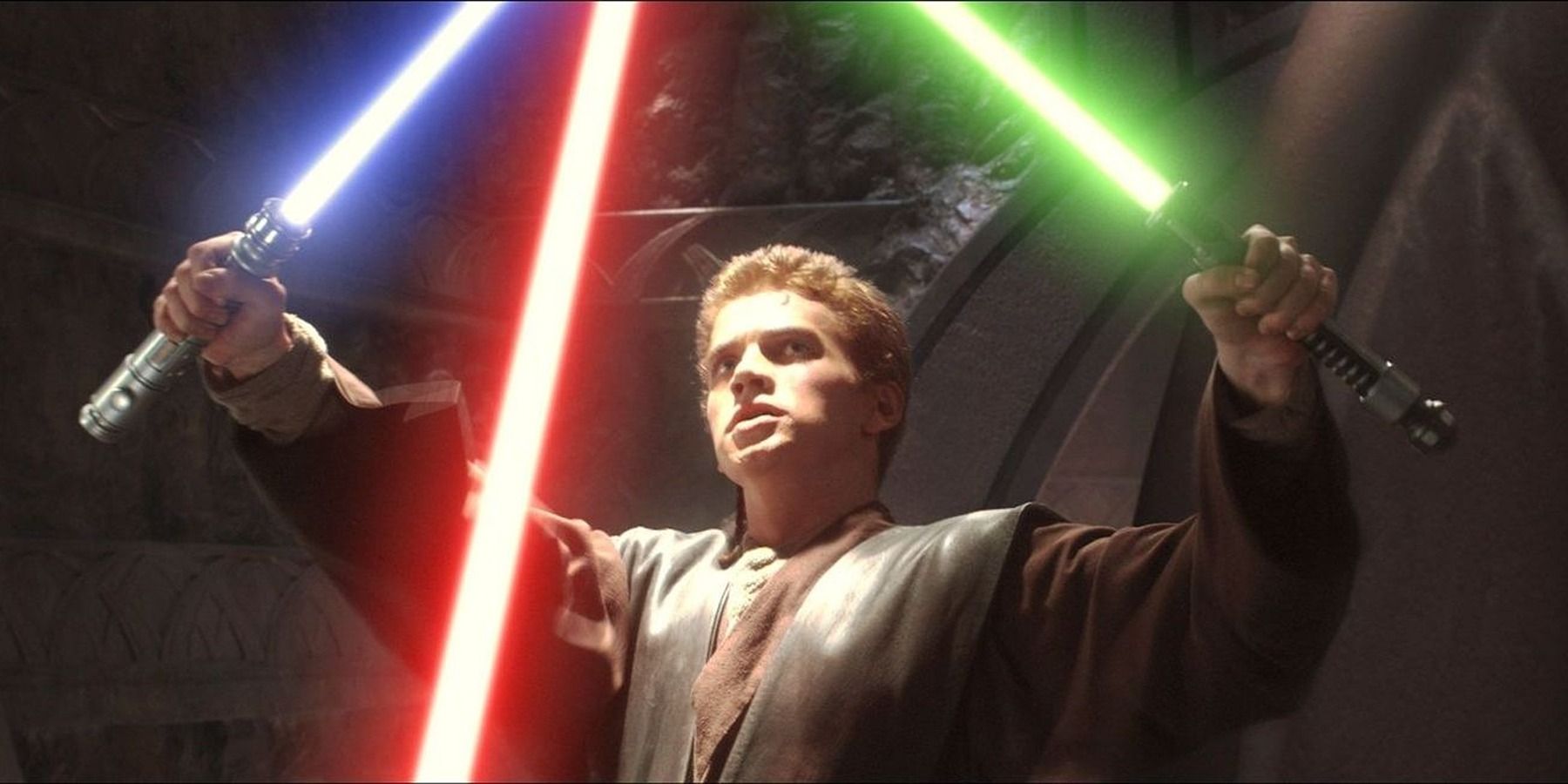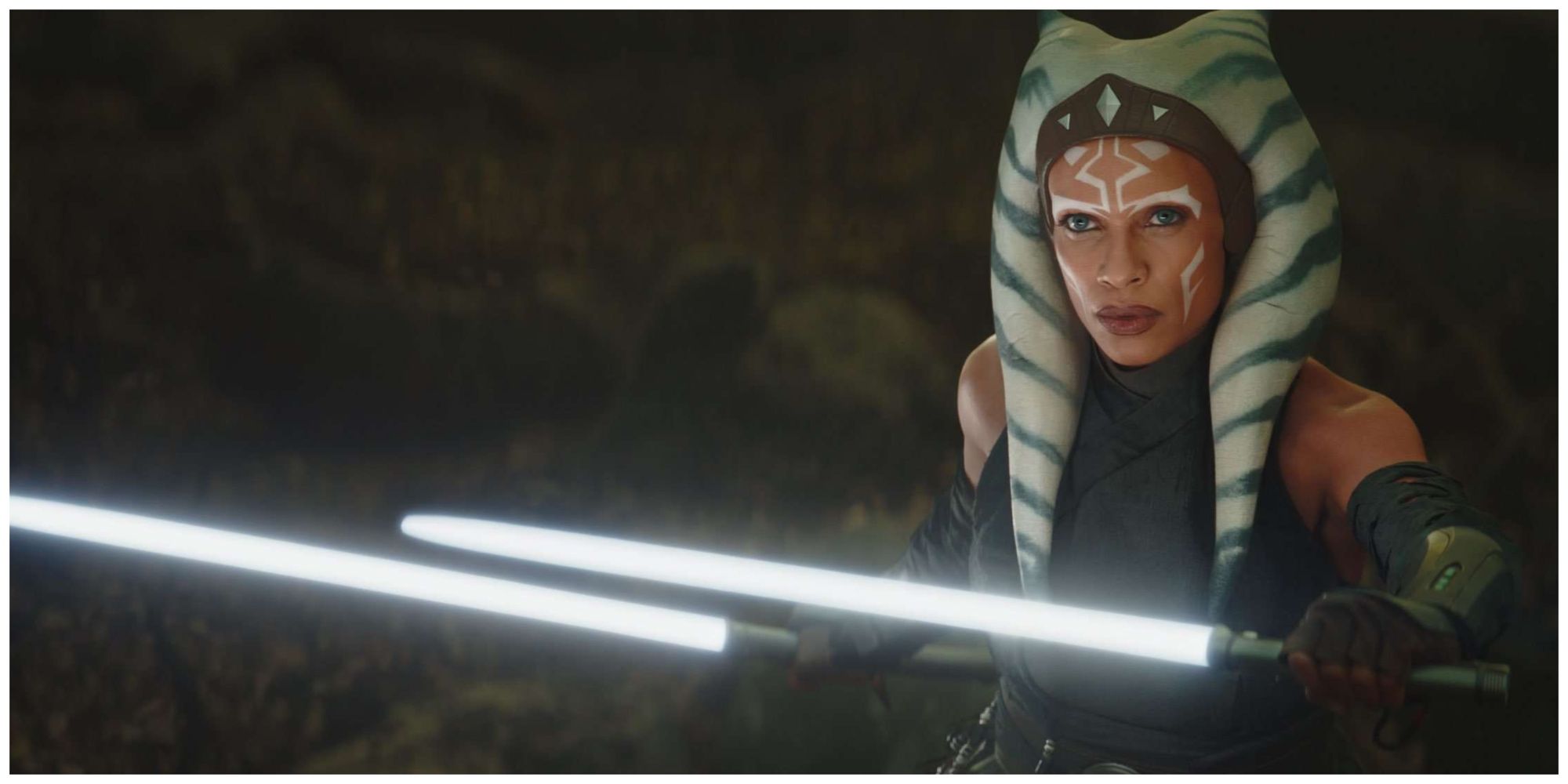The progression of the first four lightsaber combat forms in the Star Wars universe unfolds as a logical sequence. Each subsequent style aims to rectify perceived limitations in its predecessor. However, this steady evolution encounters a minor disruption with the emergence of Form V. Unlike the direct response of Form V to Form IV Ataru, it represents another endeavor to address the deficiencies of the predominantly defensive Lightsaber Form III: Soresu.
While Ataru complements Soresu by prioritizing offense, much like Form III emphasizes defense, Form V charts a middle path. This combat style relies on counterattacks to secure an upper hand in lightsaber duels. Form V possesses an intriguing feature in its division into two connected yet distinct disciplines: the Shien and Djem So stances. Both Shien and Djem So stem from a shared theoretical foundation that must be grasped before delving into their nuances.
Origin of Form V: Shien/Djem So
Form V, known as the Way of the Krayt Dragon, originated from Form III masters who sought a more offensive approach. This transformation rose from the recognition that Form III’s emphasis on defense often resulted in prolonged battles, posing risks for its practitioners. Within the Jedi ranks, some perceived Form III as inefficient, channeling efforts into defense while awaiting openings for counterattacks. Form V retained core defensive techniques from Soresu, but took a proactive stance by generating opportunities for offense. The crux of this form lay in redirecting opponents’ strikes, turning their attacks back upon them. This ranged from the literal deflection of blaster bolts, to capitalizing on a parry by launching a forceful counterstrike.
Form V underwent a significant evolution by merging the defensive maneuvers of Form III with the assertive philosophies and tactics of Form II. Its demand for heightened physical strength distinguished it from other lightsaber forms, given its focus on control over adversaries. Among the various forms, Form V was acknowledged as the most physically demanding.
The inception of Form V’s Shien variant marked the initial departure. Shien pursued the path of Soresu, catering to the necessity of an effective combat style in the face of the pervasive use of blasters. Central to Shien’s strategy was the utilization of a lightsaber not merely to halt incoming blaster bolts, but to ricochet them back toward the adversaries who launched them. This transformed the enemy’s weapon into an instrument wielded by the Jedi.
In contrast, the Djem So variant of Form V emerged centuries later to rectify the form’s inadequacies against close-quarters opponents. Djem So prioritized defense against melee attacks, particularly those executed by lightsaber-wielding foes. Despite this emphasis, Djem So shared core principles and strategies with Shien. While variations in maneuvers and techniques existed between the two, they did not suffice to categorize Djem So as a distinct form. Most Form V practitioners incorporated both Shien and Djem So techniques to ensure preparedness for any adversary. Still, personal preferences might lean towards one variant over the other.
Famous Practitioners
Yoda’s mastery extended to all forms of lightsaber combat, including Form V, showcasing his profound expertise. Jedi of larger stature often found solace in Form V, as its requirements placed less emphasis on agility compared to other forms. Instead, it capitalized on inherent strength and extended reach. This principle was exemplified by the Sith Blademaster Kas’im, who advised the formidable Sith apprentice Bane to delve into Djem So. Bane’s imposing physical attributes complemented the form’s essence.
Jedi Padawan Anakin Skywalker’s initial confrontation with the Sith Lord Dooku on Geonosis saw him employing Shien. Later, wielding dual blades, he transitioned to Form IV. When Dooku shattered one of his weapons, Skywalker resorted to his Form V skills.
Following his embrace of the dark side as a Sith, Darth Vader persisted in using Form V. His secretive apprentice, Galen Marek, also boasted proficiency in the form through Vader’s tutelage. The legacy continued with Luke Skywalker, Vader’s son, who absorbed Form V by emulating his father’s swordplay in their initial duel. During their subsequent clash, the younger Skywalker’s adeptness with Form V led to his triumph over his father. As Luke Skywalker founded the New Jedi Order, both he and the Order gleaned insights into the seven combat forms from “The Jedi Path: A Manual for Students of the Force.”
In the context of the New Sith Wars, Form V was honed by the Sith Brotherhood of Darkness’ Blademaster Kas’im. He imparted its wisdom to a cadre of apprentices and acolytes, including Darth Bane. Among the Jedi, Jedi Battlemaster Skarch Vaunk was also well-versed in Form V.
Form V found practitioners in Aayla Secura, Khaat Qiyn, Kazdan Paratus (Shien), Devan For’deschel (Djem So), Zelice Sturm, and Sora Bulq. Esteemed Jedi Masters like Adi Gallia, Plo Koon, Even Piell, Luminara Unduli, and Cin Drallig were also practitioners. Among the Padawans, Ahsoka Tano stood out, favoring the reverse Shien grip.
Known Maneuvers
Form V emerged as a physically demanding lightsaber combat style, requiring practitioners to swiftly shift from a defensive stance to a full-fledged offensive onslaught. The essence of Shien’s prowess lay in its capacity to launch surprise attacks when opponents were least prepared. This required a blend of strength and speed, enabling immediate follow-up strikes after blocking or parrying, leaving adversaries with minimal time to brace their defenses.
Incorporating various techniques for engaging adversaries armed with blasters, Form V compensated for its lack of Ataru’s agility. Once embroiled in close-quarters combat, Djem So exponents exhibited minimal movement, directing their energies into unrelenting assaults.
However, mobility dwindled when contending with blaster fire from multiple sources. Practitioners such as Tano adopted an unconventional reverse grip, a technique considered archaic during the Clone Wars era. Advocates saw this grip as a conduit for heightened power, though critics argued its limitations in defensive maneuvers, fueling debates within the ranks of Form V adepts.
Central to the Shien opening stance was a raised guard position, the lightsaber hilt clutched with both hands above the head, the blade angled rearwards and skyward. The dominant leg poised back, facilitating potent step-through strikes. “Barrier of Blades” was a favored maneuver among Shien users, shielding against blaster fire and even redirecting a portion of incoming projectiles. Another technique, “Shien Deflection,” empowered practitioners to deflect incoming projectiles while propelling toward an opponent.
For the master of Form V, a treasure trove of attack and defense techniques lay at their disposal, comprising a potent arsenal for navigating the battlefield. Ultimately, Form V’s intricate blend of defense and offense, its reliance on strategic timing, and its incorporation of distinct abilities marked it as a unique and versatile approach to lightsaber combat within the expansive realm of Star Wars.







